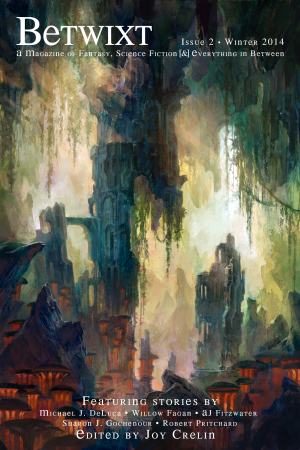The new issue of Betwixt, out yesterday online and in print, features a new story of mine, “The Stone Horse of Flores”, what I’m calling a post-virtual retelling of a Guatemalan folktale.
Being as how my rendition takes significant liberties and the original is awesome and not likely to be something you’re familiar with, I thought I’d share the story here the way I first heard it. If you have any inclination to read my version, however, might I suggest doing so first so as not to spoil it?
Flores is a little city on an island in Lago Peten Itza, in the southern (Guatemalan) portion of the Yucatan Peninsula. It was settled in the early 16th century by the Itza Maya, a sect of water priests, after abandoning their former home, Chichen Itza, to the conquering Spanish. This turned out to be quite a prescient strategic move for the Itzaes: the natural protection provided by the lake and the trackless jungles of the surrounding Peten helped keep Flores under independent rule for the next 175 years, far longer than any other Mayan settlement.
Cortés himself actually visited Flores in 1541, but his supply train had been so decimated by disease on the long trek through the jungle that he no longer had the resources to muster an attack. Instead he only rested a few days and moved on. He did, however, leave behind one injured horse, asking the Itzaes to care for it until he returned.
They did the best they could, but having never cared for a horse before, they didn’t know what to feed it or how to treat it, and it died. Luckily, Cortés never came back. Under increasing protest against his tyrannical policies from the colonies he himself had founded, he fled the New World for Spain within the year, never to return.
In 1618, seventy-five years later, two Franciscan friars visited Flores on an evangelical mission. They found its people dedicated to their own religion and made no converts, but discovered a stone statue of a horse in the city square, erected in memory of Cortés’s gift. They claimed the Itzaes had taken to worshipping the statue golden calf style. which maybe wouldn’t be so hard to believe but for the tellers, without whom this story would in all likelihood never have been carried down.
When the Spanish did finally capture Flores in 1697, they razed it to the ground, along with all its oral and written history. The usual story.
Thus far in my travels I’ve spent all of half an hour on a bus idling in a grocery store parking lot on the shore of Lago Peten Itza at four in the morning, gazing at the orange lights of the island flickering reflected in the lake.
In a few weeks I get to go back and, with any luck, spend some quality time there.






